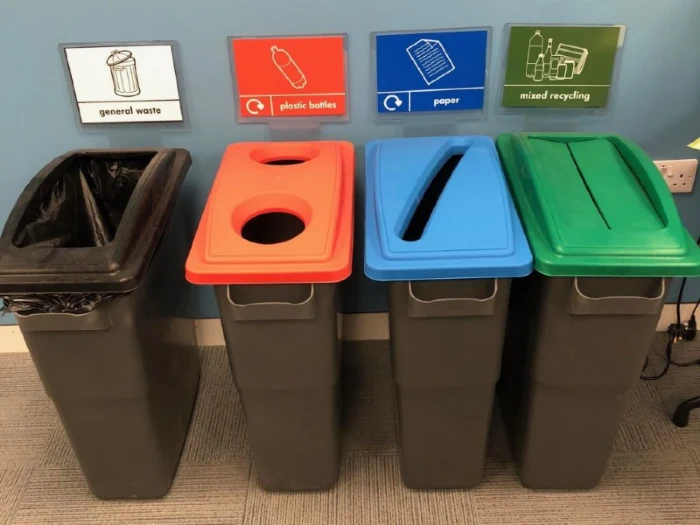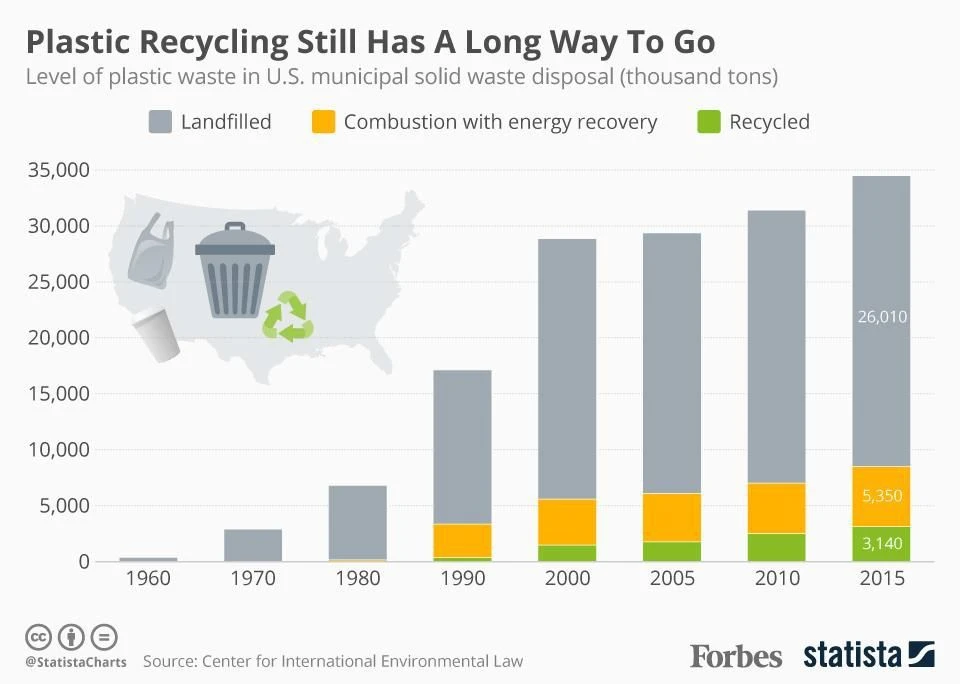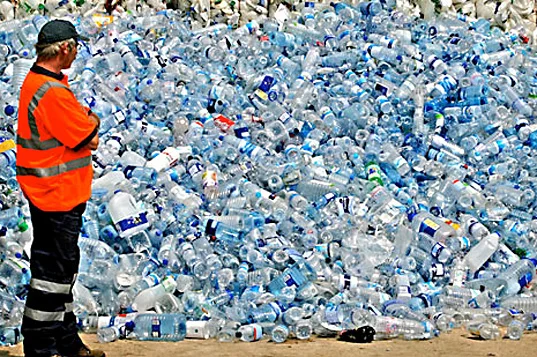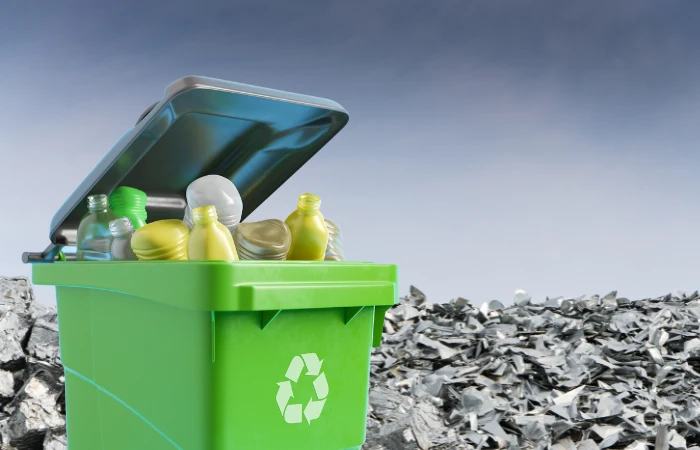Imagine this: you’ve just had a tasty coffee at your favorite café. Now, you’re looking at three bins: one for trash, one for recycling, and one for compost. Which bin should you choose for your cup?
Most of us might think the recycling bin is the best choice, but guess what? That’s not always right.
See, a lot of paper coffee cups have a thin plastic lining inside to hold liquids. This makes it tough to recycle them properly.
But here’s the easy part: the best thing you can do for the planet doesn’t happen at the bins. It actually happens before you even get that disposable cup.
Experts, like yours truly, love studying how we deal with waste, what’s good for the Earth, and how we make choices.
We’ve done some big surveys across the U.S., talking to people in October 2019 and March 2022.
And guess what we found?
People tend to focus on recycling and forget about something even more important: reducing waste and reusing stuff.
We’ve got special names for these habits. We call the first one “recycling bias” and the second one “reduction neglect.”
Here’s the scoop: for many years, lots of people tried really hard to teach everyone about recycling. And guess what? It worked in some ways – not many, but a few.
Recycling has become important to folks, but here’s the trick: it made us forget about even better ways to take care of the Earth.
And guess what else? It didn’t make us awesome recyclers, either.
And let’s face it, recycling is easier. You still buy what you want, use what you want, and throw away what you don’t want.
Recycling just changes which bin you toss your waste into!

Our planet is drowning in waste, and everyone is agreeing that things need to change – and fast! Imagine tiny bits of plastic (we call them microplastics) spreading everywhere, even in faraway places.
These little troublemakers are sneaking into our bodies and the bodies of animals, causing all sorts of problems.
Simply put, making and throwing away stuff is making the Earth sick. It’s like when we eat too many cookies –it’s not good for our health.
And guess what?
Some places get way more waste than others, which isn’t fair. And even when we try to recycle plastic, it can still make more tiny plastic pieces.
So, big news: in June 2023, the United Nations had a big talk about this mess.
They’re trying to make new rules that everyone has to follow to stop the plastic problem. And some cities and states in the U.S. are already saying no to things like plastic bags and cups.
Fixing Waste Before It Happens
The experts have some clever ideas. They say instead of just dealing with waste after it’s made, we should stop making so much waste in the first place. Makes sense, right? It’s like stopping a mess before it even starts.
Groups like the U.S. Environmental Protection Agency and the U.N. Environment Programme have a cool plan called the waste management hierarchy. It’s like a list of the best ways to help the Earth.
First on the list is “Reduce, Reuse, Recycle.” Think of it like this: it’s way better to use things less or use them again than to throw them away. Recycling is good, but it still uses energy and stuff.
The real value isn’t in the last “R”, it’s in the first – it’s the first for a reason! Reducing waste means making and consuming less stuff in the first place. And guess what? It saves Earth’s special resources, lowers pollution, deforestation and many other bad things from happening to our world.

Sorting Out the R’s: Recycling vs. Prevention
Okay, let’s get into the nitty-gritty. We did some surveys, which are like big question games, to find out what people think about waste strategies.
Guess what? Many folks thought recycling was the superhero of waste solutions. But hang on, that’s not the full picture. We asked people to put things in order – like, which is the best way to help the planet? And here’s what happened: most of them got it wrong.
There’s this fancy list from the Environmental Protection Agency with four big ideas. They go like this: First is stopping waste before it’s even made (that’s source reduction and reuse). Then comes recycling and composting (like turning food scraps into good dirt). Next is burning waste to make energy, and last is putting stuff in a landfill.
But get this, lots of people mixed up the order! Around 78% didn’t quite get it right. We also asked about the “reduce, reuse, recycle” things. It went a bit better, but still, almost half of the folks (that’s 46%) jumbled up the order.
Last test: we gave people two choices – stopping waste or recycling. The good news is that over 80% knew that stopping waste (that’s prevention) is the real superstar here. So, even though recycling is great, it’s not the only hero in town.

Recycling: Not Always a Smooth Ride
Recycling sounds awesome, right? But guess what – even though people thought it was cool, they weren’t always doing it right.
You see, in the U.S., it’s up to you and me to sort out our recyclables and make sure no bad stuff gets in there.
But here’s the tricky part: what can be recycled varies from place to place.
And it often changes because new stuff comes out and the markets for recycled things shift.
We did another round of questions where we asked folks to put everyday items into virtual recycling, compost, and trash bins.
And guess what we found?
Lots of people thought things like plastic bags (58%), coffee cups (46%), and light bulbs (26%) could be recycled, even when they can’t. Oops!
Sometimes it’s not easy to tell – like with cardboard and aluminum foil.
Whether these can be recycled depends on how your local waste system works.
There’s a funny thing called wishcycling.
That’s when people toss things they hope can be recycled, even if they can’t. But this just makes it tough for the real recyclable stuff to get sorted, and sometimes it ends up in the landfill or burned instead.
And here’s the kicker: even though people really liked recycling, they weren’t too sure it was working all the time.
Let’s Make a Real Change
Okay, here’s a big question: how much plastic do you think has actually been recycled since we started making it? Well, experts say it’s only about 9%.
But when we asked people, they thought it was around 25%. That’s still not a lot, right?
And guess what, they were right. Most of it has ended up in landfills and in our environment.
Now, here’s the thing – we often hear that we, as consumers, are the ones causing all this waste.
But that’s not the whole story.
It’s not just about what we do after we’re done using something, it’s about the whole process of making and getting rid of stuff.
There are other ways to tackle this problem.
We can make companies take more responsibility. They could design things that are easy to recycle and even take back stuff they make when we’re done with it.
Some areas already do this with things like car batteries and electronics.
When we asked people about making a change, they knew that starting at the beginning – like making stuff that doesn’t create a lot of waste – would be the best.
But here’s the catch: many thought they could only make a difference by what they buy and throw away. They saw themselves as consumers, not as citizens who can make bigger changes.
As pollution from waste grows all over the world, companies keep pointing fingers at us instead of cutting down on the stuff they make.
We believe that just recycling isn’t enough to fix the problem if we keep making and using too much stuff. It’s time for the U.S. to start making real changes, not just relying on recycling to fix everything.



















